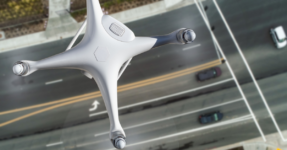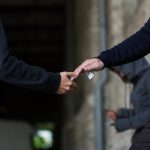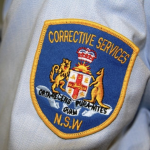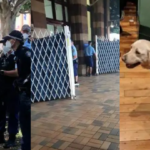Drones to ‘Manage’ Traffic on New South Wales Roads

When they were first introduced to the Australian market more than two decades ago, drones were hailed as a revolution that could be used for everything from food deliver to cattle herding and security.
The revolution has not exactly been swift. But over the past two decades drone technology has improved greatly – it has become highly sophisticated.
Drones have been deployed by the media, the military, for land surveys and mapping, and in disaster recovery efforts to access damage and to deliver supplies in difficult to access areas.
Personal use has soared, and there are a range of rules and regulations about the use of drones, otherwise known as UAVs (Unmanned Aerial Vehicles), as set out on the Civil Aviation Authority (CAA) website.
Drones for traffic management in Sydney
Now, the New South Wales Government has announced it will deploy 70 drones across Sydney city permanently, during morning and afternoon peak periods as well as high-traffic holiday periods to monitor traffic flow and collision and report back to Transport for NSW in real time.
The idea is not new: several cities facing a battle to reduce the number of vehicles on the road have taken to the use of drones to undertake “traffic management. In some places the systems have become able to deliver first aid, such as an automated defibrillator to an accident site.
According to Transport for New South Wales, the drones will help in times of traffic congestion by enabling authorities to respond faster – putting detours in place more quickly, and pushing out information to drivers via live traffic apps.
Although drivers also need to be aware of the road rules around the use of mobile phones while driving. Unless the app can be activated hands free or by a passenger, then drivers cannot use it. Learners and P-platers are strictly prohibited from using phones at all, even connected via a hands-free device, or bluetooth to the car’s multimedia screen.
The drones have been used in a trial over the past couple of months, complementing Sydney’s camera network, which comprises about 1700 cameras, focusing initially on key arterial roads in and out of Sydney such as the M1 heading north, the Hume Highway to the south and the Great Western Highway at Blackheath.
The State Government’s justification statistics are impressive – it says the use of drones will save NSW motorists more than $71 million in travel time, $24 million in secondary incidents and $23 million in vehicle operating costs.
Traffic fines are a major source of State Revenue
The key advantage of drones is that they can be deployed almost anywhere, almost immediately. And they are relatively cheap to run compared to a vehicle like a helicopter, which cannot always access high density spaces.
Which begs the question: is this the first step towards using drones for more than simply traffic management, but perhaps to police driver behaviour too and issue fines or even send people to court for traffic offences?
Since the NSW Government implemented high-tech cameras in 2019, its revenue from traffic fines has increased exponentially. According to data from Revenue NSW there were more than 1.4 million speeding offences recorded between July 2021 and June 2022, which together brought in more than $ 291 million in state revenue.
Compromising privacy
And like all surveillance mechanisms, while the rollout publicity emphasises road safety, and the importance of catching rogue drivers who put everyone at risk, there’s no arguing that drones too, are another compromise in terms of our privacy.
The same year high-tech cameras were rolled out across the State, the Privacy Commission raised concerns. And, as time has gone on there have been a number of stories about ‘inappropriate’ ‘upskirt’ photos taken by the cameras.
A sign of things to come?
That doesn’t seem to be deterring the NSW Government’s increasing reliance on cameras and AI. And the use of drones for traffic management could well extend to more usage in other types of surveillance.
China has been using drones since 2019 to monitor its roads. These drones are equipped with a loud speaker so that police officers can actually talk to road users. The UK has been using UAVs since last year.
In the USA, the affluent suburb of Beverly Hills is one of the most securitised locations in the world. There is a camera network of more than 2,000 security cameras, at least 30 operate along Rodeo Drive alone. In 2021, police launched overhead surveillance, via drone, which operates seven-days-a-week.
The programme is designed primarily to detect crime, but it is also being used to ‘deter crime’, meaning that police have the ability to track and monitor anyone as part of normal policing operations with the use of drones now codified into daily operations. The Police refer to this as ‘pre-crime work …looking for suspicious activity.’







